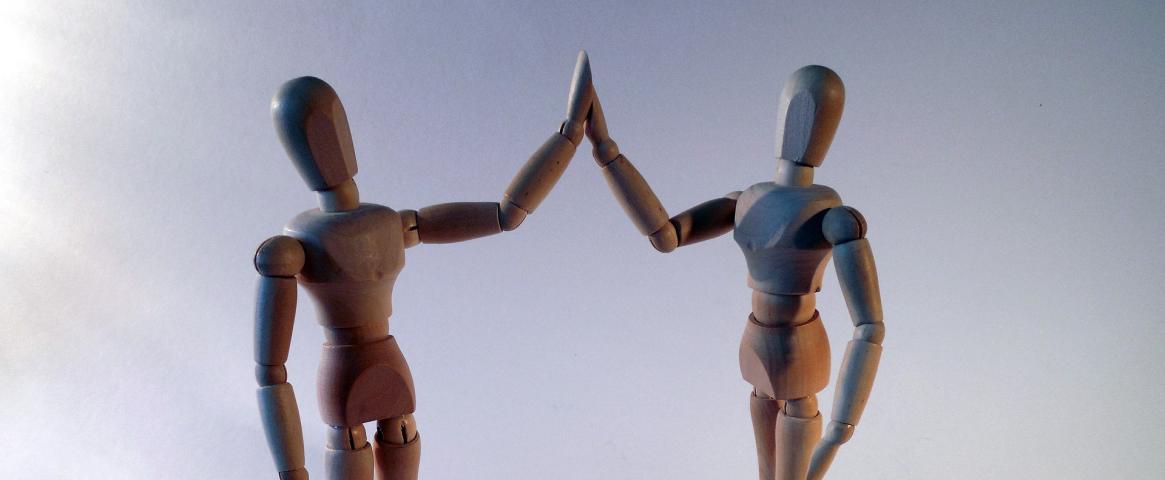By Bradley Allf
Last month, a crowd of science writers from across the U.S. and beyond packed into a boardroom in the Nittany Lion Inn “to embrace awkwardness.”
That was the aim of a unique workshop, “Four Improv Tools for Better Storytelling,” held at the ScienceWriters2019 meeting in State College, Pa. Speakers Kasha Patel, Allison Mills and Katie Mast led participants through a series of improvisational activities in what was certainly the most kinetic workshop at this year’s conference.
“You have entered what is called a ‘Brave Space,’” Mills said at the start of the workshop. “A place where you’re deliberately being challenged to go outside of your comfort zone. You are here, the door is there. We invite you to immerse yourself fully.”
For a group of geeky science writers, workshop attendees seemed to take this benediction to heart. Participants learned all kinds of improv techniques, from “babbling” – talking about a particular topic for 45 seconds nonstop – to “mirroring,” an activity where participants took turns miming one another’s movements. By the end of the workshop, Mills commented that the attendees were one of the most enthusiastic groups she had ever seen.
But what did all this have to do with science writing? “The biggest thing is getting out of your comfort zone,” said Patel, a science writer and stand-up comic. Each activity challenged participants to try something new, embrace spontaneity, and get comfortable with uncomfortable situations. With improv, that might mean swaying your hands over your head in front of a stranger. But with science writing it can mean trying a new writing style or even getting more confidence with interviewing.
That’s one aspect of Mast’s science writing that she says has improved, thanks to her experience with improv. As an introvert, Mast can find the prospect of interviewing daunting. Ten years ago, she joined a group that does “InterPlay,” a form of “body-based creative arts.” Before long, Mast found that the InterPlay training was helping her overcome interview anxiety.
“It didn’t strike me at the time that there was a connection. But then I started realizing ‘oh, I can sink back into that training and rely on some of those skills I have learned,’” she says. “I can find more ease in those situations. I don’t get as stressed out before calling somebody. If my source gives me some unexpected bit of information I can roll with it and not get caught off guard.”
Improv techniques like babbling can also help with writer’s block by serving as a sort of “verbal free-write,” according to Mills, who does a type of dance improvisation called “Contact Improv.” “It usually turns into a puppy pile on the floor where everybody’s crawling all over one another,” she laughs. But even if she doesn’t ask researchers to crawl on the floor for her job as a science writer, her experience with Contact Improv makes her writing better because it encourages her to be spontaneous, which can open up new directions for her stories.
At the end of the mirroring exercise, Mills and the other speakers asked the workshop attendees what techniques made it easiest to follow their partners’ movements. Their responses – repetition, predictability, patience, starting simple and then building out – are all characteristics that make writing easier to follow too, Mills pointed out.
While improv might not be conventional professional development for the science writer, it can still be valuable in challenging how we communicate, Mills said. “There’s an expectation that writers are far more mentally nimble than we are.” Improv can be a fun way to build skills that live up to that expectation.
Bradley Allf is a freelance science writer based in North Carolina and a recipient of a 2019 NASW Travel Fellowship. Follow him on Twitter @bradleyallf


